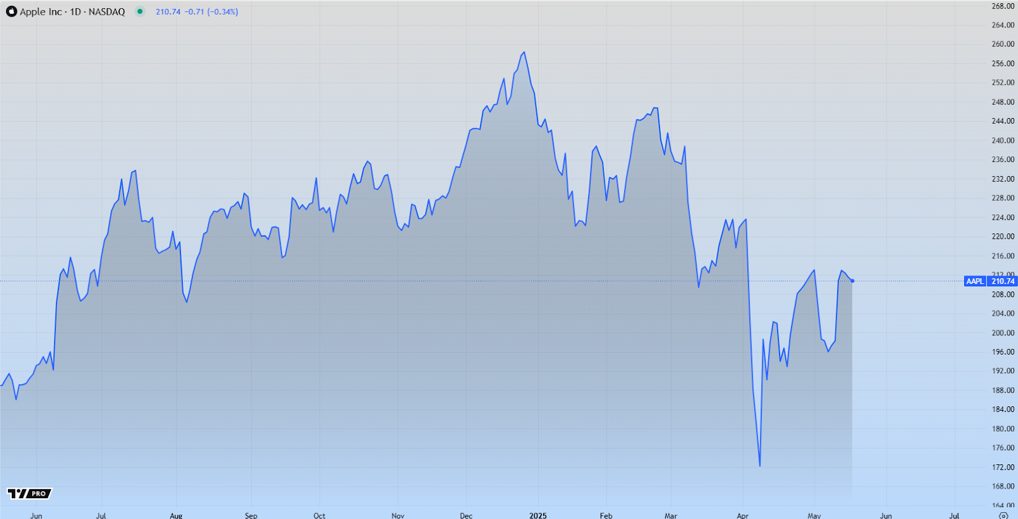Power output, or wattage, is an extremely important factor to consider when comparing solar panels. Some answers to these questions are: “This is a 250-watt panel” or “A solar panel has a wattage of 300”. Or quite simply: 250 W, 300 W or 345 W next to the name of the module. They all refer to the wattage, capacity and power output of a solar module.
But – how much electricity could your roof possibly generate if you opt for solar systems? There are various equations that can be used to determine the number of solar panels and the amount of energy required for a household.

The average annual consumption of 9000 kWh should be covered by a 6.62 kW solar generator system. In addition, a solar panel typically generates 320 watts of electricity in ideal solar conditions. You can use the solar calculator to calculate how many solar panels you need, or you can use the following formula to calculate the number of solar panels for this:
Divide 6.62 kW (the system size) by 0.320 kW (the wattage per panel) = 20.69 – rounded up this results in 21 panels. Even though your home may not be on average, this way you can calculate your own estimate.
How much energy does a solar module generate?
For example, if you get five hours of direct sunlight every day in a sunny area, you can calculate the power of your solar panel as follows: 5 hours x 290 watts (an example of the wattage of a high-quality solar panel) = 1,450 watt hours, or about 1.5 kilowatt hours (kwh). Thus, each solar panel would generate about 500-550 kWh of energy each year.
How solar modules are evaluated
Solar panels are evaluated according to the amount of direct current (DC) they generate under standard test conditions. The power of solar panels is measured in watts (W) and reflects the module’s theoretical power generation under ideal sunlight and temperature conditions. Most residential solar panels on the market have an output power of 250 to 400 watts, with higher power usually preferable to lower power. Prices in the solar industry are usually quoted per watt ($/W), and the total wattage of your solar panels plays an important role in the cost of your solar powered generator system.
Size versus quantity: Typical power and capacity of solar panels
The power output itself is not a reliable indicator of the quality and performance characteristics of a module. For certain modules, the high output power is the result of their larger dimensions and not their higher efficiency or technical superiority. For example, if two solar panels each have a 15% efficiency, but one has a power of 250 watts and the other has a power of 300 watts, this means that the 300 watt module is about 20% larger than the 250 watt module. Industry experts consider the efficiency of solar modules as a more accurate criterion for the performance of solar modules than solar capacity alone.
One can also imagine that a solar module with a rated power of 5 kW (kilowatts) can consist of either 20 250-watt panels or 16,300-watt panels. Both systems generate the same amount of energy in the same geographical location. Although a 5 kW plant in an area with fewer sunny days is likely to generate 6,000 kilowatt hours (kWh) of electricity per year. However, if the same plant is operated in an area with more sunny days, the output will be about 8,000 kWh per year.

Which solar panels generate the most electricity?
The power of solar panels usually varies between 250 and 400 watts, with some modules exceeding the 400 watt mark. There are solar modules for commercial use, mostly premium panels with outputs up to 435 watts.
Public utility energy rates continue to rise, and now is the perfect time to invest in solar energy for your home or business. Install a solar system now and you can also enjoy federal solar tax credit.

How much do the solar modules cost?
Switching to solar energy is one of the smartest investments you can make for your home and for our planet. However, even though the sun’s energy is free, turning your roof into a clean energy generator comes at a price. But, solar panels help to reduce your electricity bills.
How much should I plan for a system that meets my energy needs? How quickly can I expect my investment to be amortized? What financing options are there? You have a lot of questions about solar energy, and financial considerations will likely be at the top of your list.
In 2022, the prices for solar modules have risen by about 10 to 20 percent, depending on the manufacturer. The main reason for this is the inflation of producer prices and the increase in the price of raw materials, as well as problems in the supply chain. Polysilicon, a material used to make solar cells, has seen a dramatic increase in price. Nevertheless, the prices for solar cells have fallen drastically in the last ten years, by 60 to 90 percent. From this point of view, solar panels cells ( monocrystalline solar panels or polycrystalline) are still very cheap this year.
Despite the inflation-related price increase, solar panels are still worth every penny of the investment. Solar kits bring you at least 10 to 20 percent return within the first year of operation. Depending on the specifications of your project, your solar panel is expected to pay for itself in 10 to 15 years. Even in the face of ongoing inflation, this is an excellent result. A solar panel manufactured in the 2020s has a lifespan of 25 to 30 years. Investing in a solar system makes all the more sense if you plan to live in your house for a long time. If you don’t plan to stay there, you’re still in luck, because a PV system will increase the price of your property.
As society moves toward reducing fossil fuels, it is expected that more and more businesses and households will switch to solar energy in the coming years. Solar energy is abundant, reliable and good for the environment. If you don’t switch to solar energy today, you could be the last in your neighborhood to take that step in ten years.
How much do solar modules cost per kW system?
A single solar panel costs between 420 and 650 dollar, but can vary depending on the size and type of system. One of the most common sizes of solar systems for private households is a 4.5 kW solar module system, which costs about 13000 to 15000 dollar net (after deduction of government subsidies) and covers about 28-30 square meters of your roof.
In general, the more power your system can generate, the higher the initial installation costs. In the long term, however, the savings are also higher. For example, installing a 3 kW solar system is cheaper, but you won’t make as much money over a 25-year period as you would with a 6 kW system.







